Okay, here is the long awaited gear review I’ve gotten so
many requests for. Sorry it took so long! For prices and weights, you can look at my gear list tab. I just want to say that gear
preferences are a very personal thing and that everyone needs to find what fits
them the best. When I did my preparation, I compared gear reviews on various
journals and websites and then tested them out for myself. Everyone has their
own weight-to-comfort ratio and I tend to accept the extra weight for added
comfort. Keeping all that in mind…here we go.
Granite Gear Vapor Ki Backpack
Pros: Was the only pack I found that fit my body without
hurting or chafing my back, hips, or shoulders. Many hikers had to replace
packs, and this pack easily withstood the abuse of 5mo on the trail. Has an
exterior pocket to put my water bladder in without having to get into my pack
every time to refill it.
that adds weight and can soak up sweat/water. The few pockets were not
practical. (I ended up using my crocs hanging on my pack for easy-to-reach
snacks and gear. I regularly needed to retighten the straps to keep it
adjusted. I had the top loading bag, so I had to remove everything to get to my
gear on the bottom.
trust it. I envied hikers with ULA packs, and would like to give one of those a
try, if I decide to get a new pack.
Tarptent Contrail Tent
Pros: Light and spacious. It kept me dry and safe from the
elements. It dried out quickly after rain or a night with high condensation. I
liked the door with a lot of mesh for fresh air and a great view. I really like
it! Great individual customer service from the maker Henry Shires.
to one that was easier to set up. Once I learned how to set it up properly, I
became a big fan. It is not free standing, so it needs to be staked securely
and that can require some creativity on certain terrain. I never had a problem
and always found heavy rocks if I couldn’t stake it into the ground. Comes with
four stakes, but I recommend using 6-7 for the best set-up. Long design whipped
around a lot in high winds, but all tents did. Like many other tents, towards
the end of the trail, the zipper would split due to built up dirt and grime. It
is apparently an easy fix and I’m getting new zippers from Tarptent soon.
 Marmot Helium Sleeping Bag
Marmot Helium Sleeping BagPros: Awesome bag! Light, warm, soft, and water resistant. I
struggled to get out of it each morning and dreamt of getting back in its
cushy, heavenly, warmth all day.
it! Marmot has come out with a new one that’s even warmer, lighter, and more
expensive.
Grand Trunk Silk Sleep Sack Sleeping Bag Liner
light blanket on warm nights. Some say it also extends the life of the sleeping
bag by keeping skin oils away.
it. Could be considered a luxury item, but I don’t think I would have slept
well without it.
Therm-a-Rest NeoAir Sleeping Pad
Pros: Quite possibly my favorite piece of gear! Allowed me
sleep in the comfort of a bed every night. I even volunteered to take the floor
and use it in hotels. Light and compact.
hole that was easily repaired with tenacious tape (carry a small patch of it
just in case!).
simmer setting, so care is needed for doing more than boiling water. Hard
plastic container can take up space, but I used the top as a cup. The base of
the container gets way too dirty/sooty to use as a bowl as advertised.
Evernew Titanium Pot
my hot pot when I ate out of it.
that it wasn’t really needed and ditched it halfway through the trip.
Platypus 3L Big Zip Water Bladder
Pros: Carried a lot of water. Had a big opening for
accessing water and cleaning.
to replace mine twice on the trail. Once because the dirt in the desert got in
the connector ring and it was leaking. The second time, when I got a hole in
it. I always carried a Gatorade bottle that was sometimes needed to fill it at
awkward sources. Also, the zip top would leak if not pressed and sealed
properly. I often wondered if it was worth carrying…
Katadyn Hiker Water Filter
Nice to have for the questionable desert water sources.
that in this high water year, I didn’t need it and ditched it in Tehachapi.
water and another 20-30mins before drinking.
hold Clorox bleach (two drops/liter and wait 30mins).
Cannon PowerShot
SD 1100 IS Camera
Pros: My favorite camera that I’ve used for years. Simple,
fairly tough, and takes great pics.
worn. It isn’t waterproof and I ruined two of them after unintentionally
soaking both in water. They can withstand some moisture, but I soaked them.
SanDisk Sansa Clip
Pros: One of my favorite pieces of gear! Held all my songs and audiobooks easily. Also, small and clips to clothes or pack for easy use. Plus, it tapes radio!
Cons: Doesn’t hold as many songs as more expensive players. Small and easy to lose if you’re like me.
StickPic
I had a lot of people ask how I shot my videos while I was walking. I used the awesome StickPic. It allows you to attach your camera to the end of your hiking pole for both pictures and video. Love it! You can buy it at kick-off or order it online. Careful, they are easy to lose, so I recommend putting it on a carabeener. Also, if you lose the nut that tightens it to your camera, you can use medical tape on the screw and it tightens just fine.
Sea to Summit
Ultra Sil Dry Sacks
Pros: Come in various sizes and colors for organizing small
things. Light, resilient, and water resistant. Those who used Cuban fiber sacks
had difficulty with them shredding apart.
one I had drove me nuts at night and in the early morning because I always had
trouble finding it in my tent or pack.
that adds weight.
iPhone 4
Pros: Amazing! It was my own personal computer, phone,
camera, alarm clock, and GPS all in one. I really liked how vivid some of the
scenic pictures were too. It was really cool to be able to Skype friends and
family from the top of scenic views. Love it!
player for that reason. I heard the
iPhone 4S has longer battery life. It can drain quickly using the GPS. Just
keep it in airplane mode whenever possible. The pictures in HD can sometimes
have hues around edges if the camera is not held very still.
Otter Box Phone Case
fully waterproof), and many scratches. I dropped my phone many times and it was
always protected. Totally worth carrying!
through a lot of dark hiking.
I’ve always had.
SPOT-Personal Locator Device
basis. I know of hikers who had to use theirs to get emergency help from Search
and Rescue, and it works. The customer service is very attentive and helpful.
randomly broke after 600mi, and I had to order a new one. There were many times
when I later found out from my family that they never got my nightly signal.
Most nights, I had my cell phone and could make sure the signal sent out the
email, but the point is to know it works when you don’t have cell service!
Apparently, the button needs to stay lit for a lot longer than I originally
thought. Once I figured that out, it worked much better.
Sea to Summit Insect Shield Head Net
net…trust me! Using a fully brimmed hat is the most effective. My neck and ears
were covered in bites until I started using my buff to cover them.
Sierra and through S Oregon.
Leatherman Style CS Multitool
Pros: Small, light, has multiple tools (including
scissors!), and has a carabeener to clip it to my bag for easy access.
just adds extra weight.
don’t feel great about where the money is going. At times, many hikers found
the information to be wrong, incomplete, or misleading. This can get really
frustrating if it’s your only resource and you need something that can be
consistently trusted. For example, some campsites or water sources no longer
existed and that’s important! Most frustrating for many hikers were the
elevation charts, which were either incorrect or too general. Also, some of the
trail town information is outdated and no longer relevant. Trust Yogi for trail
town information!
resource when there are Halfmile’s maps, which are free(accepts donations),
from a respected trail angel, and much more reliable. I rarely used my ETB
maps, except for checking where campsites and water sources might be. The PCT
is pretty easy to follow, so you’ll be okay with ETB. My moral compass doesn’t
feel great about using them, but they’ll get the job done. I wouldn’t want to
rely on it as my sole resource.
Halfmile’s Maps
Pros: These maps are free(donations accepted) and can be
printed out. They can also be uploaded onto GPS units and phones, which is
awesome! The maps have good detail that I was able to use when looking for
stealth campsites. The elevation charts were great and summarized all the
needed information.
sheets of paper. Halfmile has yet to hike the Washington section of the PCT, so
he does not list many campsites and water sources through there. I know this is
improving, but at that point, I was secure enough in my skills to find water
and campsites just fine. Halfmile will usually list water that is
guaranteed(with some seasonal options). With this year being a high water year,
I was easily able to get water from the seasonal sources in ETB’s book too.
Bottom Line: I would definitely recommend Halfmile maps as
your sole resource if you are looking to save money. If you don’t mind spending
the money, I recommend that you use Halfmile maps on a device with GPS
capabilities and only print out the elevation charts and trail notes. The elevation charts
include the points of interest, campsites, and water sources. Then I recommend
carrying ETB to have paper maps if you need them. Plus, then you have
additional campsites and water sources that Halfmile may not have included.
It’s nice to have both to have the most information.
Yogi’s PCT Handbook
Pros: I really liked having this reliable resource. The
details in trail towns change often and Yogi does a good job of keeping things
as up to date as possible. What I didn’t realize until later on the trail, was
how helpful Yogi’s notes about the trail are. I recommend glancing through it
every night/morning. There are great suggestions for water sources, campsites,
stream crossings, hidden huts, etc. Every year, there are a ton of questions
asked on the PCT-L about preparation, mail drops, trail towns, etc. GET YOGI’S
HANDBOOK!!!
could use some updating. I’m sure she is working on this, but overall, the
information is helpful.
who pride themselves on saying that they don’t use it…but then those are the
same people who end up asking me if they can borrow my pages or if they can
copy some information out of the handbook. I agree that it isn’t essential to
have the handbook to successfully hike the trail, but it will make the
experience much more enjoyable.
Powermonkey eXplorer Solar Charger
Pros: Has an external battery that stays charged and can be
used when needed. The battery can be charged using the solar panel or more
quickly with a wall outlet. It comes with many adapters, so I could use it to
charge my phone and MP3 player.
credit because I made it about 1,000mi before I needed to replace the solar
panel. I had been too rough with the connecting cord and it detached from the
solar panel. The company was great and sent me a replacement for free. The
adapter for the iPhone had to be ordered separately when I bought it, and it is
also VERY fragile. Be gentle with it and I suggest keeping it in its’
protective case when not in use. It definitely doesn’t hold as much charge as
it claims, but it got the job done for me. It takes longer than I’d hoped for
it to charge both by wall socket and solar panel. I had to be more conservative
on the northern part of the trail because of overcast and forested areas.
connected. It isn’t perfect, but it seemed to be the best option for what I
needed. I know solar chargers are still being developed and newer ones may
prove to be better, but I’d recommend this one.
Diva Cup-Feminine Hygiene
my monthly period on the trail. If you have to deal with it, then I suggest the
Diva Cup. Look it up. I would definitely practice using it before going on the
trail if you’ve never used it before. I like it because it’s minimal, I don’t
have to worry about accumulating trash, and depending on the day, I could go
the whole day without having to worry about it. I love that it is
environmentally better AND saves me money. I have converted to using it in
everyday life and I really recommend it.
because it has no vents. Also, to save weight, there are no side pockets. After
using it the whole trip as my main jacket, I found out the hard way that my
pack had rubbed out the waterproofing and it was no longer fully waterproof in
a full day of cold WA rain.
find yourself finishing close to October, I recommend sending yourself a warmer
jacket in WA or waterproof it again before you hit the northern rain.
cold, mud, brush, and rain of WA. Wear tights under them to stay warm. The
zippers at the ankle got stuck with mud in them. With all the brush, one of my
pant legs ripped to shreds. They made it through the trip, but they were the
one thing I had to throw away at the end of the trip.
the way, but have something sturdy for WA if you are expecting to be there late
in the season in rain. Everyone I hiked with in WA had tears in their rain
pants, so don’t skimp.
I get cold easily, but many hikers saved the weight, and had the zip or the
pull over.
Balega Socks
I loved these socks. My feet had bad reactions to wool and
these were great. I only needed eight pairs the whole trip.
Icebreaker BodyFit 200 long sleeve top(sleep top)
I really like this top, but I found that I was plenty warm
and didn’t need it, so I sent it home. I mostly ended up sleeping in my hiking
clothes after awhile. I just wore my Nano Puff Jacket to sleep if I needed
something warmer.
camp for warmth, when my pants were wet, or just to have something clean to put
on at the end of the day.
so I suggest getting a pack of latex gloves to wear over the gloves in the rain
or in the mornings when taking down a wet tent. The latex ones lasted a long
time, but I threw a new set in each resupply just in case. A simple thing that
made my days so much more enjoyable!
and I had a third for sleeping.
doubles as a great swim top.
backpacking if I didn’t have dry clean shoes to put on at the end of the day
and middle of the night for bathroom runs. I was also able to use the Crocs as
extra pockets to hold my daily snacks on the side of my bag.
Montrail AT Plus Hiking Shoes
is what I needed. A wide shoe, enough mesh to be airy without letting in a ton
of water/debris, good grip on the sole, and durable. I do suggest inserts to
make them more cushioned. I only needed four pairs the whole hike. I also
suggest that if you think you’ll be in WA near fall, think about getting the
waterproof ones for that section. I needed much more warmth in the cold rain.
Lynco L405 Sports Orthotic Insoles
I knew I’d need some type of added support to hike the trail and another hiker told me about the Lynco Insoles. I am a neutral walker and tend to need something for the ball of my foot. These are very unique and I recommend using them for a good month before the trail if your feet are new to them. They have a lump under the upper part of the arch of your foot. There are other styles for different needs. The unique form takes some getting used to, but I found them to feel great and also relieve a lot of the pressure on the ball of my foot. Totally worth the price for me. I bought a new pair with each pair of shoes. Many people bought insoles more often than that though.
they worked out great. They were durable most of the hike. Anything that can
last that many miles gets a thumbs up from me. I did have to replace the tips
in Shasta after the lava rocks of Hat Creek Rim. Boo! Then, I randomly slipped
and bent one of my poles on a snow patch in OR. The company was easy to work
with and I was able to easily order my replacement part to be delivered to the
next town.
these short and long sleeves. They made it the whole hike and I still wear them!
made it through the whole trail. It was nice to have the option of shorts or
pants. They have lots of pockets for my gadgets and snacks. The only pants I
could find that weren’t form fitting and tight in the thighs. I wish they came
in XS because they ran a bit big and I had to get them taken in.
bought two pairs and only needed one the whole trail. They were also great to
wear for swimming. A suggestion from the maker is that if they are being used
for hiking, cut off the tight elastic band on the thighs. Worked great for me!
I recommend buying two pairs and switching in N Cal. I once tried to go a week
without them and I couldn’t stand all the debris that got in my shoes. Also,
without them, my socks were quick to get holes in them.
useful in deep snow. Especially in the cold Sierra mornings. I might recommend
using them if you are headed into WA late in the season. I saved the weight and
didn’t use them, but they would probably save your rain pants from shredding
with all the brush.
a rental program if you don’t want to buy a bear canister because these are
expensive. Others who used the other popular bear canister (BearVault)
sometimes had problems screwing the lid off in freezing temps. Not a problem
with the Bearikade.
at the top wore a hole in my pack. You need to have a coin (or something) to
undo the screws at the top. It isn’t clear, so you cannot see all that is in
it.
food if you are planning on doing more than 5 days. Most hikers used BearVault,
which are slightly bigger, and seemed to be okay with them.
my microspikes real well. They were perfect for the conditions we were in. We
would hit varied patches of snow, ice, mud, rocks, water, etc. Those who had
crampons, found them to be aggravating and useless when they had to stop often
to take them on and off. Those with Yaktrax didn’t have enough grip and they
broke easily. Definitely go with the microspikes.
Some hikers used the C.A.M.P Corsa or Whippet to save weight, but it’s all up
to personal preference and how much security you feel you’re comfortable with.
As for length, longer is better. You want something long enough that you can
comfortably hold onto like a cane on steep snowy traverses. If it is too short,
you will be bending over and off balance. There is no point in saving on weight
if it negates the point of having an ice axe to begin with.
many of you are making your wish lists. I hope this helped some of you with
your research. Good luck!
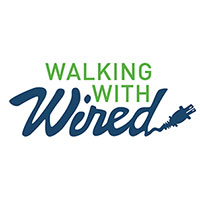





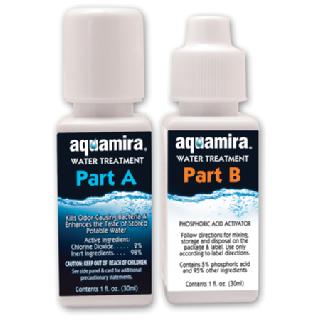

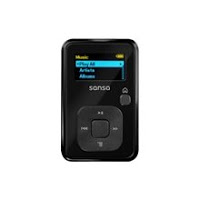
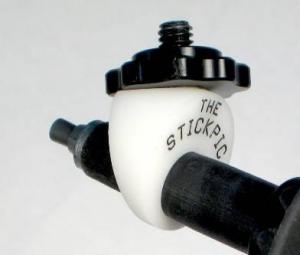




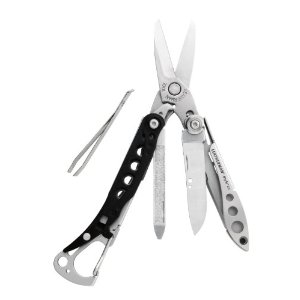



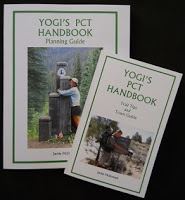




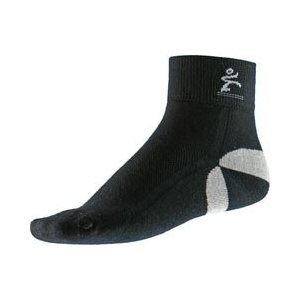

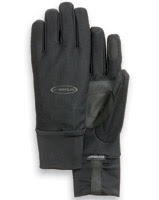
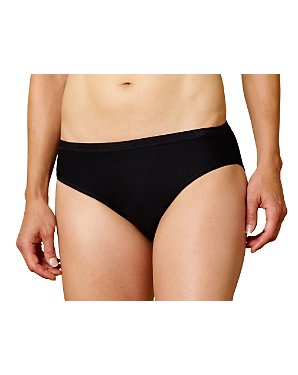
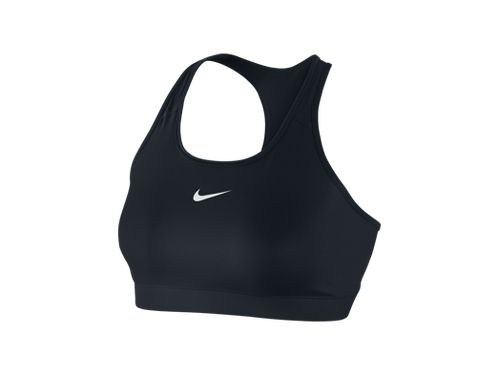
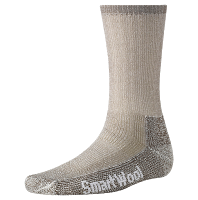


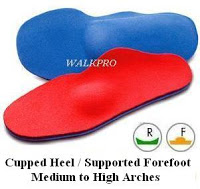


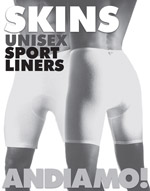




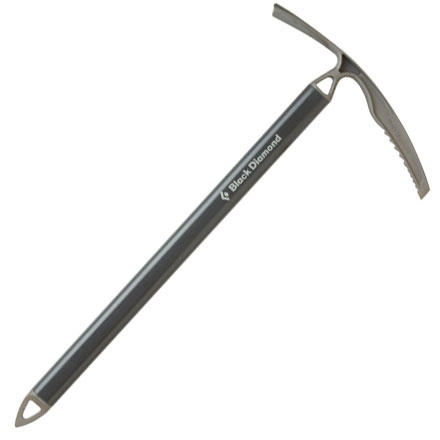



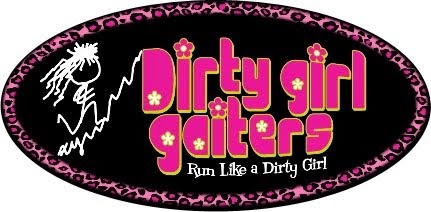




That guy “pine” looks like Ed Shearan! Lol. Anyway I’m just snooping around your gears lists….
Haha!
Hi! What was your base weight? I really like your list and am curious what to shoot for. Thanks for all your help!
It’s listed on the tab for my PCT on the blog. The link to that particular gear list is on there as well. I was heavier than I am now that I’ve gone lightweight.
Hi! I’m prepping for a PCT attempt, leaving on 4/28. This is my first thru-hike and I’m wondering what your opinions are on food storage outside of bear canister areas. I’ve heard some say to sleep with it, which does not bother me, but I’m wondering if I should carry items for a bear hang as well. Will that ever be necessary? Thanks for your time.
Oh exciting! Great day to start:) Most seasoned thru-hikers would tell you not to worry about hanging and to just sleep with the food. I love using the food bags sold by Zpacks. My strategy has always been to have my food organized in ziplocs and then sealed in the Zpacks bag…and then inside my pack which I keep in the tent. It’s always worked for me…just be alert to not camp in highly used areas where rodents would be more habituated.